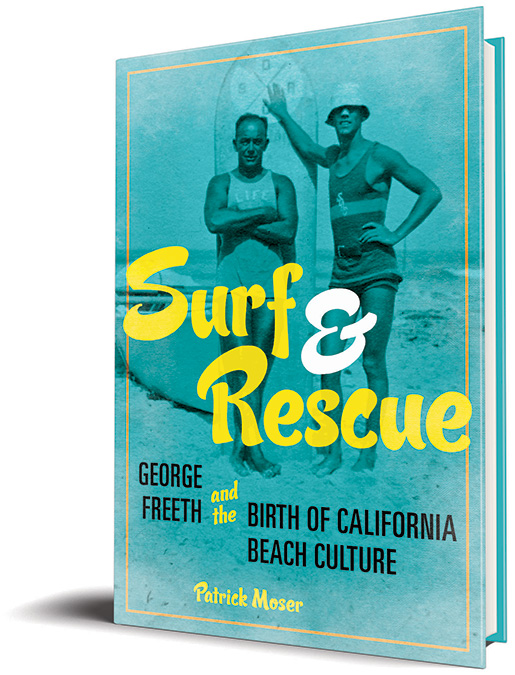
When Patrick Moser, Ph.D. ’97, attended UC Davis, he missed surfing near his home in Sonoma County. “So I had an idea to teach a class on it,” he shared. That class on the history and culture of surfing at the Experimental College morphed into an anthology on surfing and a greater interest to write about his passion. Now, his new book, Surf and Rescue: George Freeth and the Birth of California Beach Culture (University of Illinois Press, 2022), highlights a pioneer in the field. It is out in June.
What was the inspiration for this new book?
The book started out as a novel. I was really interested in this character, George Freeth. He arrives in California from Hawaii in 1907 and brings this native Hawaiian perspective about the ocean. You not only have to respect it, but you can have immense pleasure and fun in the ocean. That wasn’t a widespread belief. I traced the origins of California beach culture as we know it today, which is surfing and lifeguarding, back to Freeth. At a time when drownings were very common because there was no formal lifeguard service, he really brought this idea of learning about the ocean — waves, currents — and having a lot of fun while doing it.

Did you learn anything surprising?
I was surprised to learn how much influence he had. Basically it started off as a novel, and I stopped the novel and decided I needed to find out more about his actual life before I could start inventing things. As I got into his biography, I realized he’s the pioneer of California beach culture because he combined surfing and lifeguarding. That was the lightbulb moment for me because there was something larger to his story.
What kind of research did this book entail?
For me, it was really critical to have access to digitized newspaper databases. That helped me fill in the kind of day-to-day activities of his life because so little is known about him and there was a lot of contradictory information about his accomplishments, what he did, who his family was. So I started researching in the newspapers. It was a goldmine to fill in those details.
What is the preview for the next book?
I found this little niche of California beach culture, so my current project is picking up where Freeth left off when he died — 1920 to WWII. During the 1930s, basically during the Great Depression, there was a huge Hawaiian influence in California, and the movies and music. That really helped California beach culture develop. But during the ’30s, that’s when Californians begin to make it “Californian.” They use cars to get to beach places, coming up with surf racks, make their own surf wear. It’s all kind of “do-it-yourself.” So the second book talks about the Hawaiian influence but also how California begins to separate itself from those influences and truly make it California beach culture.
As a professor of French at Drury University in Missouri, do you get to surf very often?
I’m on sabbatical this year, so I spent four months in California, just this past summer, and it was great to surf, reconnect with friends and family, and do some research. It’s my vicarious connection to California.